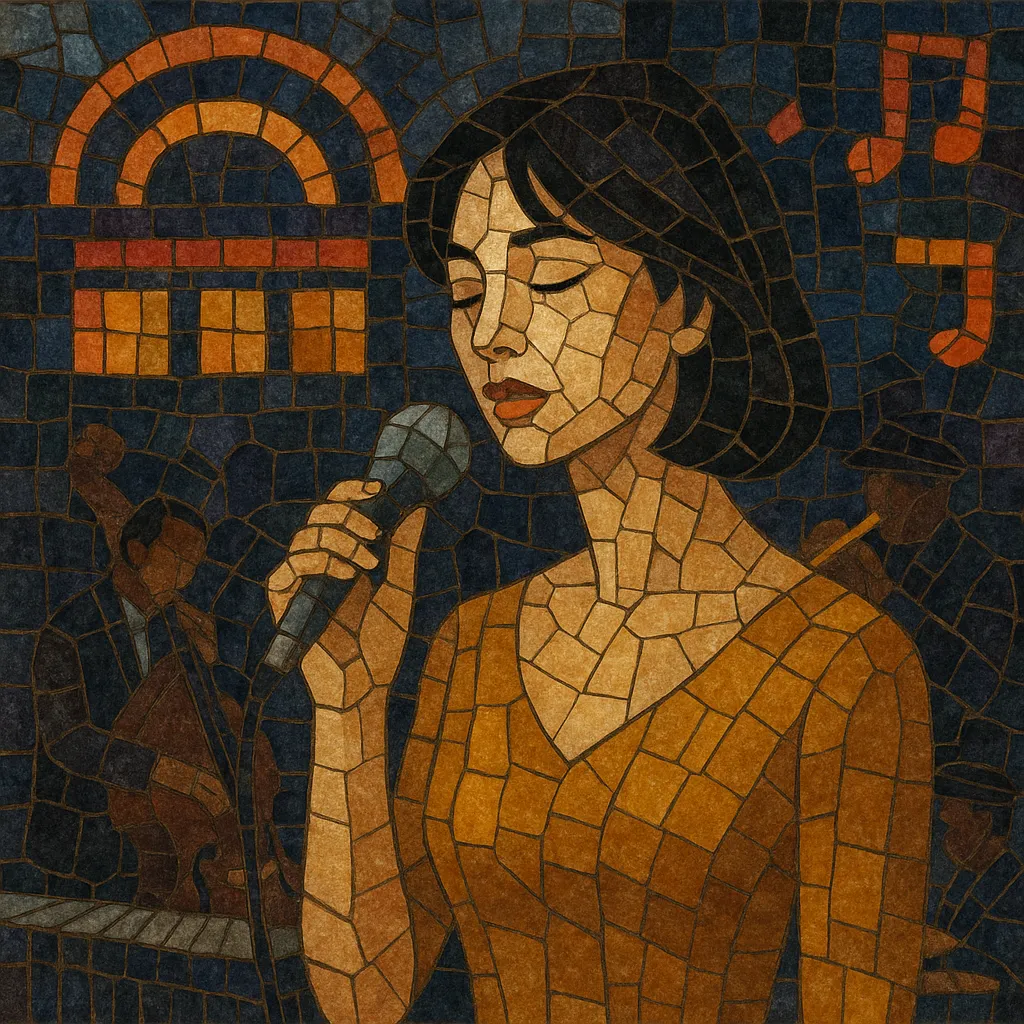Mood kayō (ムード歌謡) is a mid‑century Japanese popular style that blends kayōkyoku songcraft with nightclub crooning and light jazz/Latin arrangements. It favors a smooth, intimate vocal delivery over lush strings, muted horns, vibraphone, and gently swinging rhythm sections.
The genre’s sound world evokes late‑night bars, neon cityscapes, and bittersweet romance. Harmonically it borrows from American jazz and Latin ballads (ii–V–I turns, major 7ths, extensions), while rhythmically it draws on bolero, cha‑cha‑cha, and light mambo feels. Lyrics typically focus on adult themes—love, longing, regret, and fleeting encounters—framed with urbane sophistication.
After World War II, Japan’s urban entertainment districts flourished with dance halls, jazz clubs, and cabarets. Within this milieu, mood kayō took shape as a suave, adult‑oriented offshoot of kayōkyoku. Arrangers and bandleaders imported jazz harmonies and Latin dance rhythms, setting them beneath Japanese pop melodies. The result was a polished crooner format tailored to late‑night radio and smoky lounges.
Throughout the 1960s, mood kayō became a mainstay of radio, TV variety shows, and nightclub stages. Lush orchestrations (strings, saxophone, vibraphone, brushed drums) complemented baritone or warm tenor vocals. Hits often painted cinematic scenes of city romance—whiskey glasses, twilight harbors, and rain‑soaked avenues—marrying cosmopolitan imagery to memorable melodies.
While enka leaned more toward melodramatic vibrato and traditional scales, mood kayō emphasized Western jazz harmonies and Latin inflections. Yet the genres overlapped: some singers moved between them, and mood kayō’s urbane orchestration informed later enka productions. As kayōkyoku diversified, mood kayō stood as its lounge‑jazz, adult contemporary wing.
With the rise of idol kayō, new music, and eventually J‑pop, mood kayō’s chart dominance waned. However, its arranging language—smooth jazz chords, tasteful horns, and Latin ballad grooves—fed into the refinement of 1970s–80s city pop and continues to inform Japanese jazz‑pop balladry. The genre survives through revivals, television nostalgia programs, and reinterpretations by contemporary singers.


